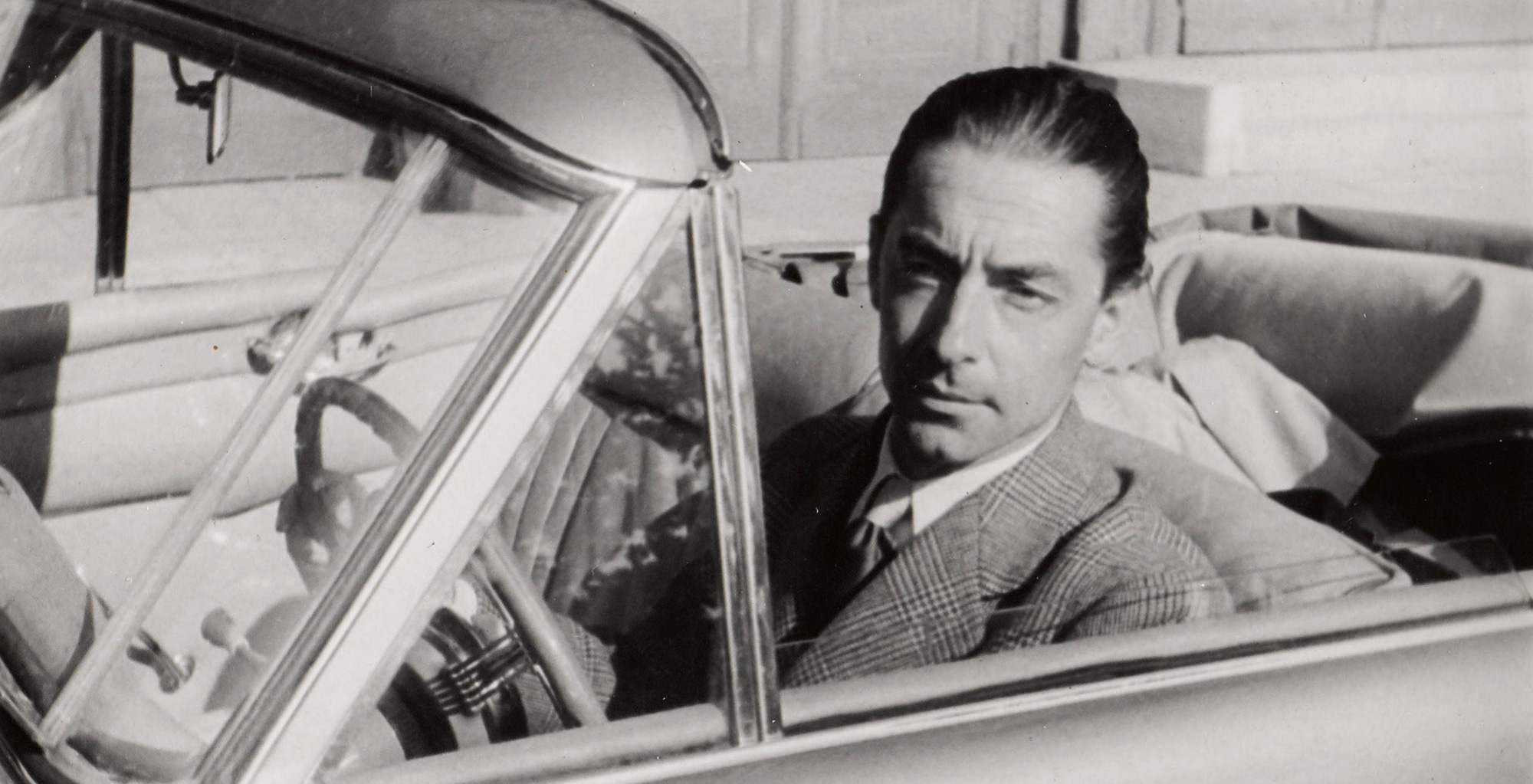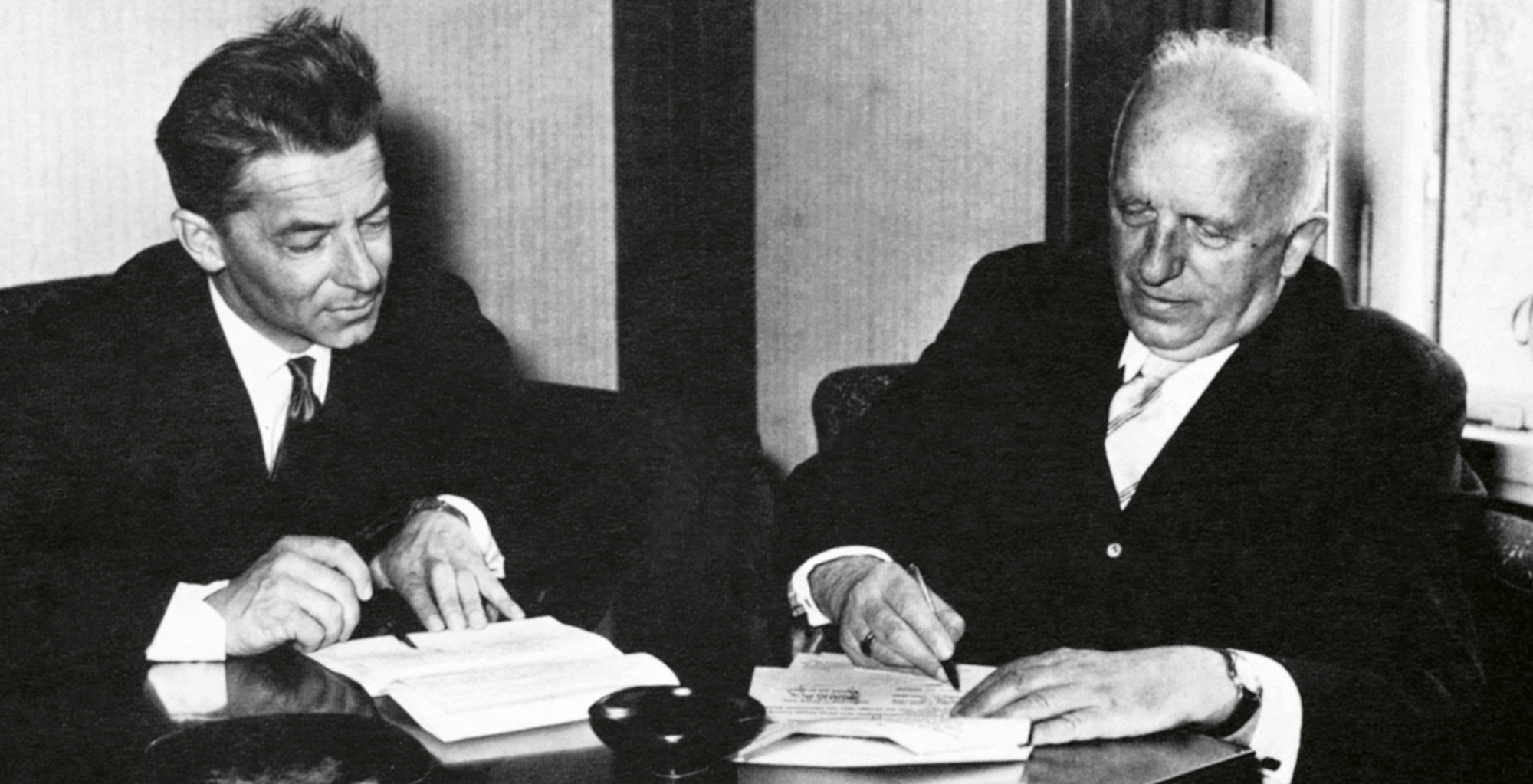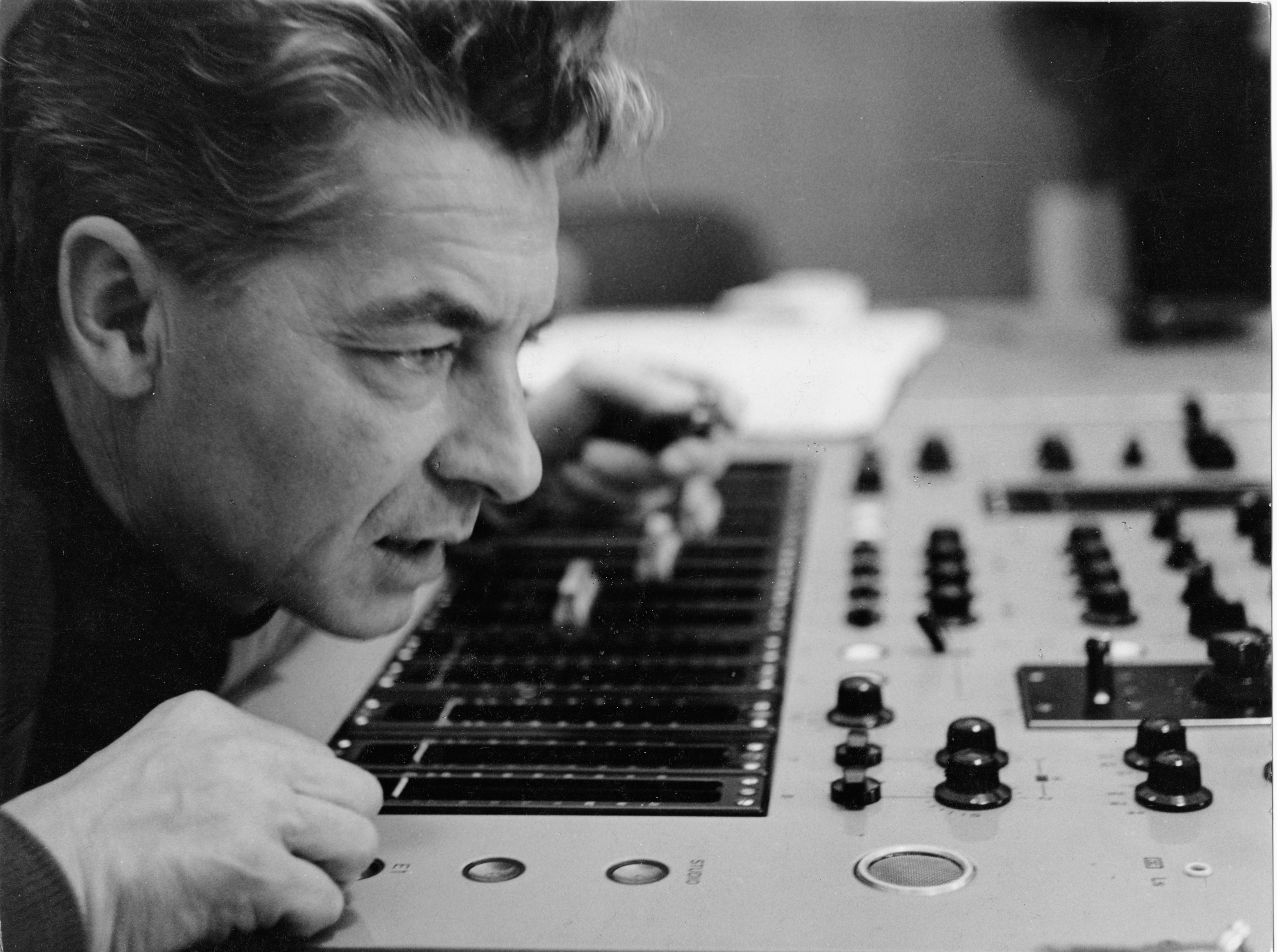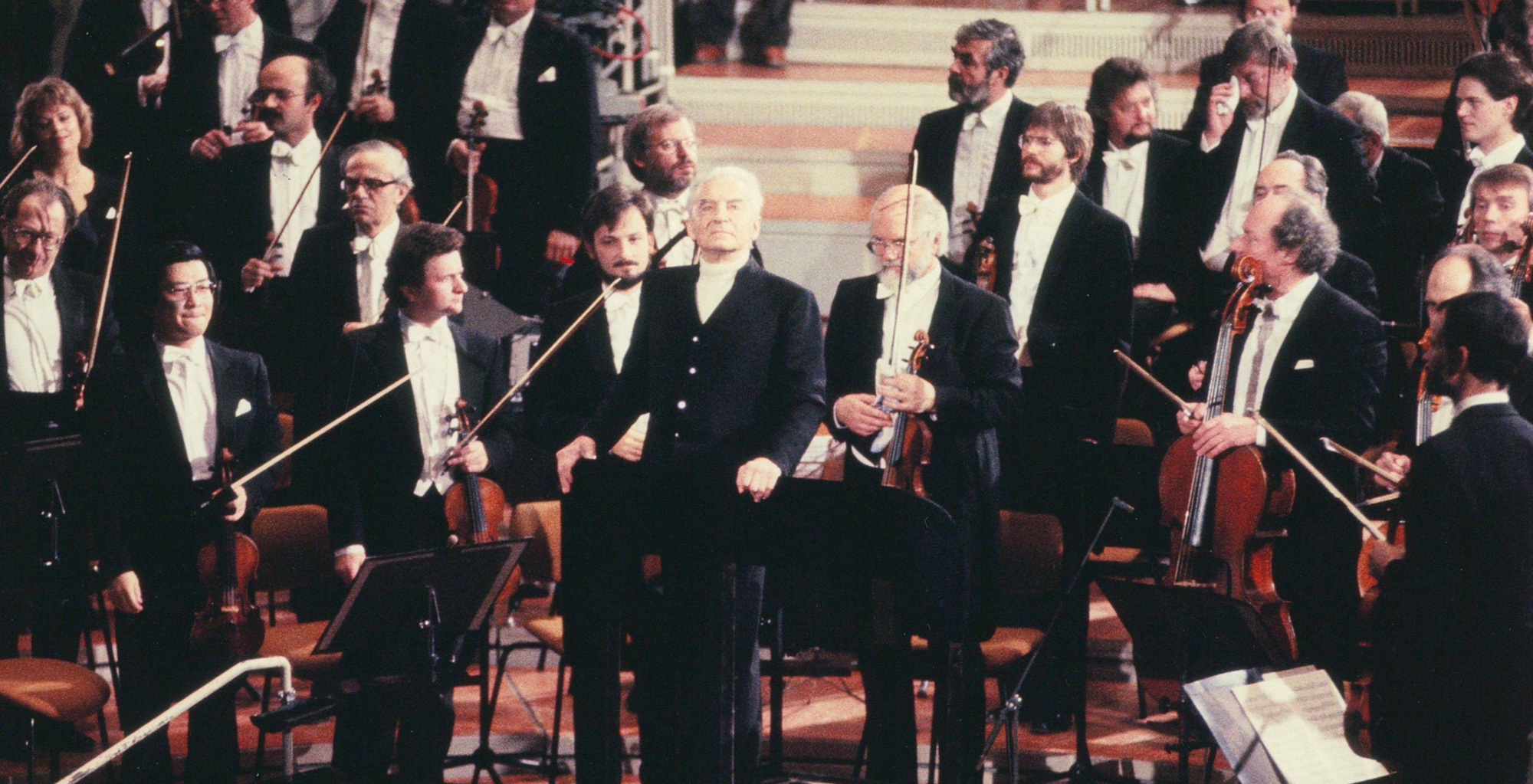- Portrait
- History
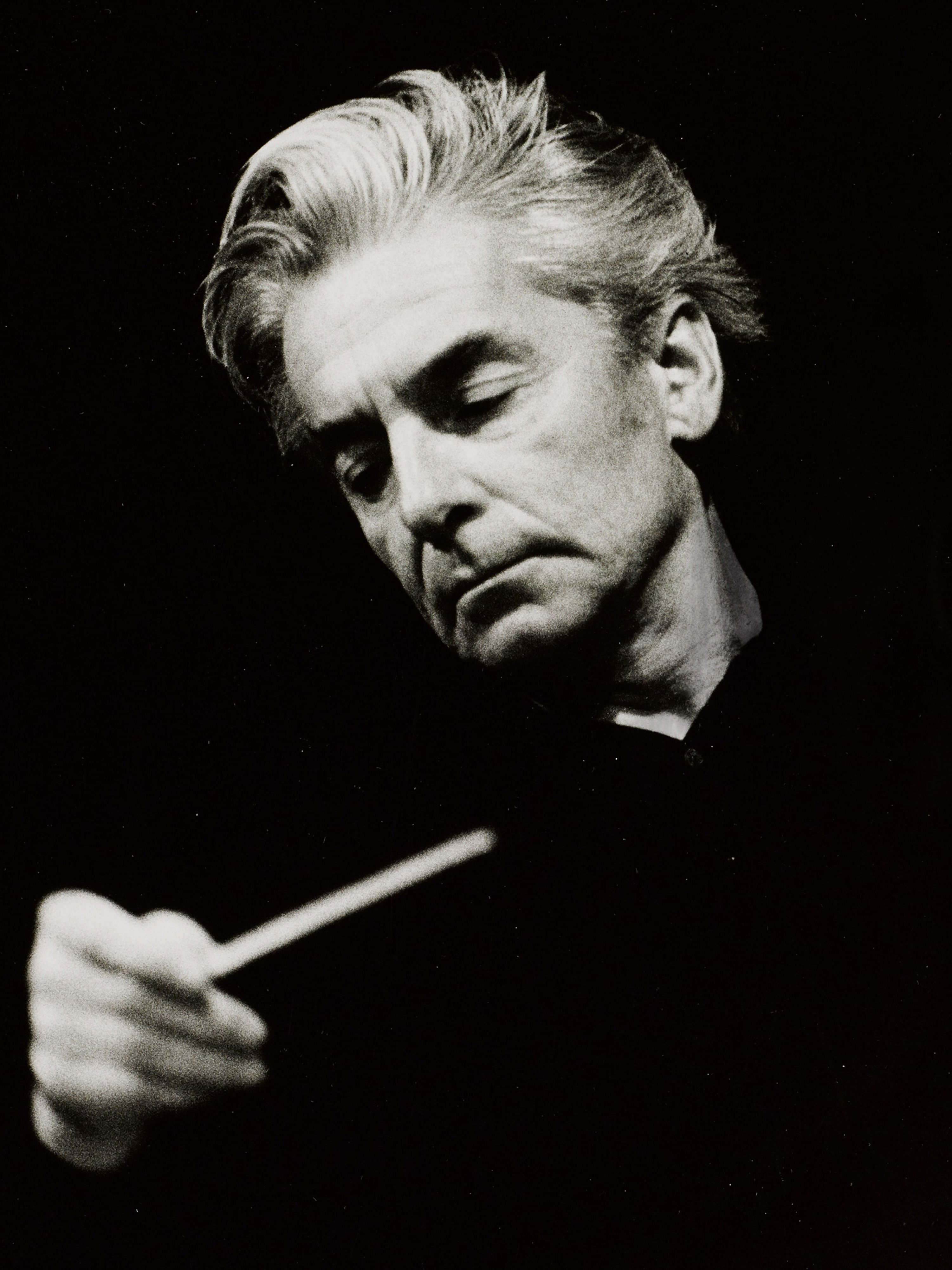
It is a happy coincidence that the roadworks and landscaping on Herbert-von-Karajan-Straße in front of the Philharmonie will be completed exactly on the 30th anniversary of the conductor’s death. The part of Matthäikirchstraße, which was renamed in 1998 in memory of Karajan, a towering figure of his time, now presents itself to passers-by in a new, inviting urban way. The reduction from four to two lanes on the road has created a lot of space for strolling, making the experience of attending a concert at the Kulturforum an even more pleasant experience for visitors. And that fits perfectly with Karajan who was first and foremost a “live” artist, a performer to whose appearances audiences made a pilgrimage.
Mesmerising personality
The charisma of this exceptional artist mesmerised audiences wherever he appeared in the world. “His very person seemed to transport something of the mysterious aura of the Romantic genius into the jet and media age,” as the music critic Sybil Mahlke described this effect in her obituary in the Tagesspiegel in July 1989. Of course, this magic could best unfold in the Philharmonie, the grandiose vineyard-like concert hall by the architect Hans Scharoun for whom Karajan had been a strong advocate from the very beginning. Here, from 1963, he was able to cultivate his aesthetic ideals to perfection in symbiotic interaction with his Philharmoniker.
Rehearsals with a lot of empathy
The nickname “Circus Karajani”, which Berliners with their particular blunt sense of humour called the building, failed to capture the truth, for here, in the glorious Karajan era, the focus was not on glamour, but on serious analysis of the scores. “The rehearsals were of an intensity, a precision and of a kind of chamber music-like interplay,” Götz Teutsch , a cellist of many years with the orchestra, said about Karajan. “With a lot of empathy, he made everyone in rehearsals feel like he was talking to them directly, he was letting you collaborate with the soloists and the concert masters.”
His sustained engagement with Beethoven which is documented in three recordings of the complete symphonies by Karajan and the Philharmoniker, the cultivation of the Romantic core repertoire from Brahms to Bruckner, the conductor’s late interest in Gustav Mahler, the intoxicating sound experience of the fin de siècle marvels of Richard Strauss – anyone who experienced these will remember many moments which deserve to be called “historic”. Nobody has come as close to the ideal of perfect beauty in music as Herbert von Karajan. “I need complete harmony,” he said regarding to his artistic work, and pointed out how firmly convinced he was that classical music could lift people “into better worlds”.
Media pioneer
This “life-long” artistic partnership, which began in 1955, lasted almost 35 years, although it was not without serious friction right at the end. Karajan’s work is documented on countless records, CDs and videos. Some of these can be watched and listened to in the Philharmoniker’s Digital Concert Hall, which includes 19 live recordings plus four documentary films about the phenomenon that was Karajan.
He was always open to technical innovations: he promoted stereo in its early stages, then launched the CD with Sony in 1981, and was also inspired by laser disc technology which ultimately didn’t catch on. The fact that the Berliner Philharmoniker are today one of the world’s most innovative orchestras in terms of media presence and distribution channels is also thanks to the preparatory work of their legendary chief conductor.
An infallible nose for talent
Herbert von Karajan lives on in musical life in a particularly delightful way through the many conductors he supported, helping them with words and deeds in the early stages of their careers. The list of names is long, and includes Seiji Ozawa and Christian Thielemann in addition to his two successors Claudio Abbado and Simon Rattle. The unforgotten maestro also continues to do good with the orchestra academy which bears his name.
With funds raised from financially powerful friends from the world of business, the conductor established a scholarship system in 1972 that allows top graduates to gain two years of hands-on experience in the Philharmonie, through one-to-one tuition with experienced professionals, through his own chamber music projects, and above all, through the fantastic opportunity to play under the baton of the foremost conductors in the main auditorium. Double bass player Peter Riegelbauer, who now heads the Karajan Academy, was the first to make the leap from the trainee programme to a permanent position in 1981.
Almost a quarter of the present Philharmoniker were recruited from the academy established by Karajan with such far-sightedness. If, on this, the 30th anniversary of his death, you want to remind yourself of the live experience that Herbert von Karajan gave to his fans around the globe, we recommend a technique of inward-focusing which the maestro himself often employed on concert evenings: when the music starts, close your eyes.

